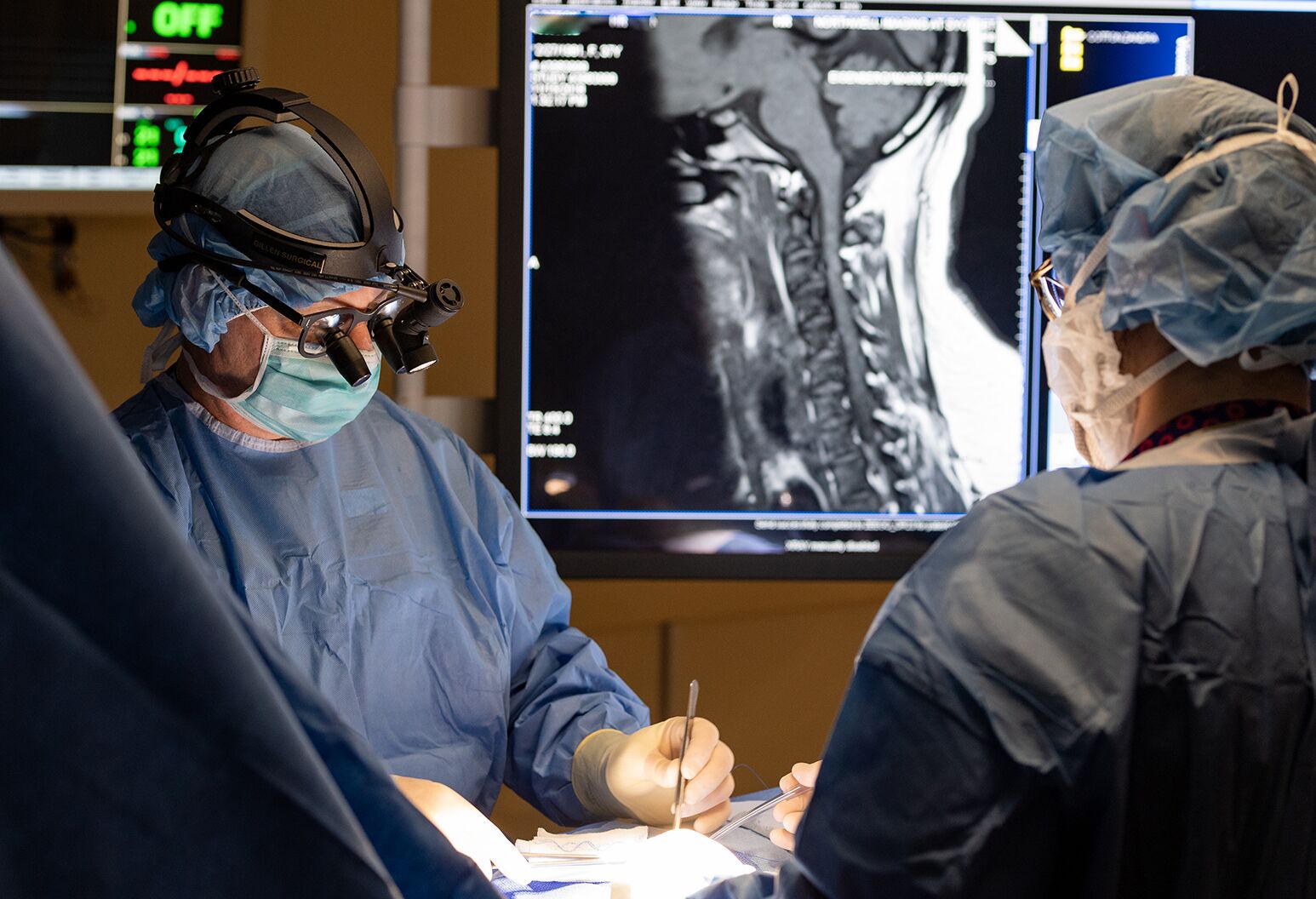An Introduction of Back Problems That Commonly Cause Surgical Treatments
When conservative treatments fail to ease consistent signs,Spinal column conditions such as herniated discs, spine stenosis, and degenerative disc disease frequently necessitate surgical interventions. These problems not just result in substantial discomfort yet can likewise drastically hinder daily functioning and overall lifestyle. Comprehending the subtleties of each condition and the corresponding medical choices, such as discectomy or back fusion, is critical for effective management. As we discover these problems further, it ends up being evident that the decision-making process bordering surgical therapy is diverse and warrants mindful factor to consider.
Herniated Discs
Although several individuals with herniated discs might locate alleviation with conservative therapies, surgery becomes a needed consideration when symptoms worsen or persist - best spine surgeons in st louis mo. A herniated disc occurs when the soft internal gel of a spinal disc protrudes through its external layer, possibly leading and compressing nearby nerves to discomfort, feeling numb, or weak point in the extremities
Traditional administration commonly includes physical therapy, discomfort medications, and corticosteroid injections, which aim to lower inflammation and enhance feature. Nevertheless, in instances where these methods fall short to reduce devastating symptoms, medical options might be discovered.
The most usual surgery for herniated discs is a discectomy, which involves the elimination of the herniated part of the disc to ease stress on the influenced nerve root. In more severe instances, spine combination might be necessary to support the influenced vertebrae.
Clients are recommended to go over the potential dangers and benefits of surgery with their medical care supplier to make an educated decision. Eventually, the objective of any medical intervention is to recover function, ease pain, and enhance overall lifestyle for individuals dealing with herniated discs.
Back Constriction
Spine stenosis happens when the areas within the spine slim, resulting in raised pressure on the spine and nerves. This condition can develop in various areas of the spine, including the cervical and lumbar locations, frequently because of age-related adjustments, such as degenerative disc illness, joint inflammation, or thickening of tendons.
People with spine stenosis might provide with signs that consist of discomfort, feeling numb, prickling, or weakness, largely in the legs or arms. These signs and symptoms can be exacerbated by tasks that include standing or strolling, often leading individuals to seek alleviation via conservative treatments like physical treatment, medicines, or epidural steroid shots.
Nonetheless, when these non-surgical interventions fall short to give ample relief, surgical alternatives might be thought about. Usual surgical treatments for spine constriction consist of laminectomy, which includes the removal of part of the vertebra to alleviate pressure, and back blend, which stabilizes the affected location.
Spondylolisthesis
Spondylolisthesis happens when one vertebra slides onward over one more, resulting in misalignment of the back. This problem can result from different factors, consisting of congenital defects, injury, or degenerative adjustments in the spinal column. It is most commonly observed in the lumbar region, particularly at the L4-L5 and L5-S1 levels.

Treatment alternatives differ based on the severity of the slippage and the signs and symptoms provided. Conventional procedures, consisting of physical treatment, pain monitoring, and activity adjustment, are typically the initial line of protection. When non-surgical strategies fall short to ease symptoms or when significant nerve compression is existing, medical treatment might be necessitated. Surgical options can consist of back combination or decompression procedures, targeted at bring back alignment and minimizing neurological signs. next page Early diagnosis and appropriate administration are critical for optimum outcomes in people with spondylolisthesis.
Degenerative Disc Disease

The problem can be identified through a combination of clinical analysis, imaging research studies, and individual history. When these strategies fall short to provide ample alleviation, medical interventions may be taken into consideration.
Surgical alternatives for DDD may include spinal fusion or artificial disc substitute, targeted at stabilizing the impacted sector and minimizing discomfort (best spine surgeons in st louis mo). Eventually, the selection of therapy is individualized, thinking about the intensity of the problem, person wellness, and way of living variables
Spine Growths

What factors contribute to the advancement of tumors within the spinal column, and exactly how do they manifest in patients? Back lumps can develop from numerous aspects, consisting of hereditary proneness, environmental influences, and pre-existing medical problems. They can be classified as key growths, coming from in the back, or secondary tumors, which spread out from other areas of the body. Individuals may offer with a variety of symptoms, including local discomfort, neurological deficiencies, weak point, or modifications in digestive tract and bladder feature, depending on the lump's size and area.
Diagnosis usually entails imaging research studies such as MRI or CT scans, important link which aid mark the tumor's attributes and effect on bordering structures. In evaluating treatment alternatives, the tumor's type, grade, and place are essential considerations. Surgical intervention may be required to ease signs, get a biopsy, or remove the lump entirely. The objective of surgical procedure is typically to unwind neural components and support the spinal column. Adjuvant therapies, consisting of radiation or chemotherapy, might likewise be required relying on the lump's nature. Early detection and intervention are essential for optimizing end results in patients with spine growths.
Verdict
In summary, spine conditions such as herniated discs, spine constriction, spondylolisthesis, degenerative disc disease, and spinal growths frequently demand medical intervention because of their potential to trigger substantial discomfort and useful impairment. While traditional treatments may supply short-term alleviation, medical alternatives come to be critical when signs and symptoms continue or intensify. Timely diagnosis and treatment play a critical role in restoring function and boosting the lifestyle for affected people, emphasizing the value of thorough spine treatment.
